An Experimental Investigation on the Creep Behavior of Deep Brittle Rock Materials
Abstract
:1. Introduction
2. Experimental Procedure
2.1. Rock Specimen
2.2. Test Setup
2.3. Testing Methods
3. Characteristics of Time-Dependency
3.1. Axial, Lateral, and Volumetric Creep Strain
3.2. Evolution Laws of Poisson’s Ratio
3.3. Evolution Laws of Creep Rate with Stress Levels
3.4. Characterization of Time-Dependent Properties by DIC Technology
3.5. Characterization of Time-Dependent Properties by AE Technology
3.5.1. Complete Specimen
3.5.2. Incomplete Specimen
3.6. Creep Failure Mode
4. Conclusions
- During the evolvement process from the time-dependent deformation to the failure of quartz sandstone, the lateral strain is more sensitive to the increasing applied load and the lateral ductility is more significant.
- The quartz sandstone, in a saturated state, shows a certain bearing capacity before the volumetric dilation predominance, and under the softening effect caused by the moisture, the Poisson’s ratio maintains a nearly constant value during the middle stress stages. The more notable increasing tendency of the steady creep rate with the increasing stress level is exhibited by the larger slope and intercept in the fitting relations.
- Compression and extension coexist on the granite during the creep process. The failure may first occur in the prominent deformation area and may correspond to the initial cracking sound.
- The AE hits present the similar time-dependent behaviors to the deformation of the granite, and both the AE amplitude and energy display the attenuation mode before the rock enters into the unstable stage. The spatial distribution of the AE event points reflect that the defective rock produces the more remarkable damage accumulation, which induces lower strength and larger deformation than the intact rock.
- The dry and saturated quartz sandstone, respectively, show the main shear pattern and the coexistence of the shear and splitting failures. However, since the failure mode of the granite is relatively manifold, detailed research on its formation mechanism will be conducted in future work.
Author Contributions
Funding
Institutional Review Board Statement
Informed Consent Statement
Data Availability Statement
Conflicts of Interest
References
- Ortlepp, W.D.; Stacey, T.R. Rockburst mechanisms in tunnels and shafts. Tunn. Undergr. Sp. Tech. 1994, 9, 59–65. [Google Scholar] [CrossRef]
- He, M.C.; Miao, J.L.; Feng, J.L. Rock burst process of limestone and its acoustic emission characteristics under true-triaxial unloading conditions. Int. J. Rock Mech. Min. Sci. 2010, 47, 286–298. [Google Scholar] [CrossRef]
- Zhang, L.W.; Zhang, X.Y.; Wu, J.; Zhao, D.K.; Fu, H. Rockburst prediction model based on comprehensive weight and extension methods and its engineering application. Bull. Eng. Geol. Environ. 2020, 79, 4891–4903. [Google Scholar] [CrossRef]
- Zhang, J.J.; Fu, B.J. Rockburst and its criteria and control. Chin. J. Rock Mech. Eng. 2008, 27, 2034–2042. (In Chinese) [Google Scholar] [CrossRef]
- Chen, B.R.; Feng, X.T.; Ming, H.J.; Zhou, H.; Zeng, X.H.; Feng, G.L.; Xiao, Y.X. Evolution law and mechanism of rockburst in deep tunnel: Time delayed rockburst. Chin. J. Rock Mech. Eng. 2012, 31, 561–569. (In Chinese) [Google Scholar]
- Chen, H.Z.; Shao, Z.S.; Jin, D.D.; Zhang, Z.; Zhou, D.B. A numerical investigation into the effect of homogeneity on the time-dependent behavior of brittle rock. Materials 2021, 14, 6818. [Google Scholar] [CrossRef] [PubMed]
- Li, X.Z. Micromechanics-Based Study on the Progressive and Creep Failure Properties of Brittle Rocks. Ph.D. Thesis, Xi’an University of Architecture and Technology, Xi’an, China, 2016. (In Chinese). [Google Scholar]
- Yang, Y.S.; Zhou, H.; Zhang, C.Q.; Zhang, K.; Yan, F. Experimental investigation on time-lag failure properties of marble under uniaxial compressive test. Chin. J. Rock Soil Mech. 2011, 32, 2714–2720. (In Chinese) [Google Scholar] [CrossRef]
- Zhao, X.J.; Chen, B.R.; Zhao, H.B.; Jie, B.H.; Ning, Z.F. Laboratory creep tests for time-dependent properties of a marble in Jinping II hydropower station. J. Rock Mech. Geotech. Eng. 2012, 4, 168–176. [Google Scholar] [CrossRef] [Green Version]
- Gruden, D.M. Single-increment creep experiments on rock under uniaxial compression. Int. J. Rock Mech. Min. Sci. Geomech. Abstr. 1971, 8, 127–142. [Google Scholar] [CrossRef]
- Okubo, S.; Nishimatsu, Y. Complete creep curves under uniaxial compression. Int. J. Rock Mech. Min. Sci. Geomech. Abstr. 1991, 28, 77–82. [Google Scholar] [CrossRef]
- Ma, L.; Daemen, J.J.K. An experimental study on creep of welded tuff. Int. J. Rock Mech. Min. Sci. 2006, 43, 282–291. [Google Scholar] [CrossRef]
- Heap, M.J.; Baud, P.; Meredith, P.G.; Bell, A.F.; Main, I.G. Time-dependent brittle creep in Darley Dale sandstone. J. Geophys. Res. 2009, 114, B07203. [Google Scholar] [CrossRef] [Green Version]
- Paraskevopoulou, C.; Matthew, P.; Mark, D.; Simon, L.; Tom, L.; Mark, J. Time-dependent behaviour of brittle rocks based on static load laboratory tests. Geotech. Geol. Eng. 2018, 36, 337–376. [Google Scholar] [CrossRef]
- Kranz, R.; Harris, W.J.; Carter, N.L. Static fatigue of granite at 200 °C. J. Geophys. Res. 1982, 9, 1–4. [Google Scholar] [CrossRef]
- Fujii, Y.; Kiyama, T.; Ishijima, Y.; Kodama, J. Circumferential strain behavior during creep tests of brittle rocks. Int. J. Rock Mech. Min. Sci. 1999, 36, 323–337. [Google Scholar] [CrossRef]
- Okubo, S.; Fukui, K.; Hashiba, K. Development of a transparent triaxial cell and observation of rock deformation in compression and creep tests. Int. J. Rock Mech. Min. Sci. 2008, 45, 351–361. [Google Scholar] [CrossRef]
- Nicolas, A.; Fortin, J.; Regnet, J.B.; Verberne, B.A.; Plümper, O.; Dimanov, A.; Spiers, C.J.; Guéguen, Y. Brittle and semibrittle creep of tavel limestone deformed at room temperature. J. Geophys. Res. 2017, 112, 4436–4459. [Google Scholar] [CrossRef]
- Lockner, D.; Byerlee, J. Acoustic emission and creep in rock at high confining pressure and differential stress. Bull. Seismol. Soc. Am. 1977, 67, 247–258. [Google Scholar] [CrossRef]
- Ohnaka, M. Acoustic emission during creep of brittle rock. Int. J. Rock Mech. Min. Sci. Geomech. Abstr. 1983, 20, 121–134. [Google Scholar] [CrossRef]
- Grgic, D.; Amitrano, D. Creep of a porous rock and associated acoustic emission under different hydrous conditions. J. Geophys. Res. 2009, 114, B10201. [Google Scholar] [CrossRef]
- Heap, M.J.; Baud, P.; Meredith, P.G.; Vinciguerra, S.; Bell, A.F.; Main, I.G. Brittle creep in basalt and its application to time-dependent volcano deformation. Earth Planet Sci. 2011, 307, 71–82. [Google Scholar] [CrossRef]
- Wang, R.B.; Xu, W.Y.; Zhang, J.C.; Wang, W. Study on accelerated creep properties and creep damage constitutive relation for volcanic breccias. In Constitutive Modeling of Geomaterials; Springer: Berlin/Heidelberg, Germany, 2013; pp. 633–639. [Google Scholar] [CrossRef]
- Triantis, D.; Kourkoulis, S.K. Fracture precursor phenomena in marble specimens under uniaxial compression by means of Acoustic Emission data. Frattura ed Integrità Strutturale 2019, 50, 537–547. [Google Scholar] [CrossRef] [Green Version]
- Lin, Q.X.; Liu, Y.M.; Tham, L.G.; Tang, C.A.; Lee, P.K.K.; Wang, J. Time-dependent strength degradation of granite. Int. J. Rock Mech. Min. Sci. 2009, 46, 1103–1114. [Google Scholar] [CrossRef]
- Shi, G.C.; Yang, X.J.; Yu, H.C.; Zhu, C. Acoustic emission characteristics of creep fracture evolution in double-fracture fine sandstone under uniaxial compression. Eng. Fract. Mech. 2018, 210, 13–28. [Google Scholar] [CrossRef]
- Liu, J.P.; Xu, S.D.; Li, Y.H. Analysis of rock mass stability according to power-law attenuation characteristics of acoustic emission and microseismic activities. Tunn. Undergr. Sp. Tech. 2019, 83, 303–312. [Google Scholar] [CrossRef]
- Song, Y.M.; Zhao, T.B.; Jiang, Y.D. Experimental study on the evolution of creep deformation field of rock based on DSCM. J. China Univ. Min. Technol. 2013, 42, 466–470. (In Chinese) [Google Scholar] [CrossRef]
- Tang, Y. Time-Dependent Behavior of Rocks under Triaxial Compression Condition. Ph.D. Thesis, Chongqing University, Chongqing, China, 2018. (In Chinese). [Google Scholar]
- Brantut, N.; Heap, M.J.; Meredith, P.G.; Baud, P. Time-dependent cracking and brittle creep in crustal rocks: A review. J. Struct. Geol. 2013, 52, 17–43. [Google Scholar] [CrossRef]
- Freiman, S.W. Effects of chemical environments on slow crack growth in glasses and ceramics. J. Geophys. Res.-Solid Earth 1984, 89, 4072–4076. [Google Scholar] [CrossRef]
- Atkinson, B.K. Subcritical crack growth in geological materials. J. Geophys. Res.-Solid Earth 1984, 89, 4077–4114. [Google Scholar] [CrossRef]
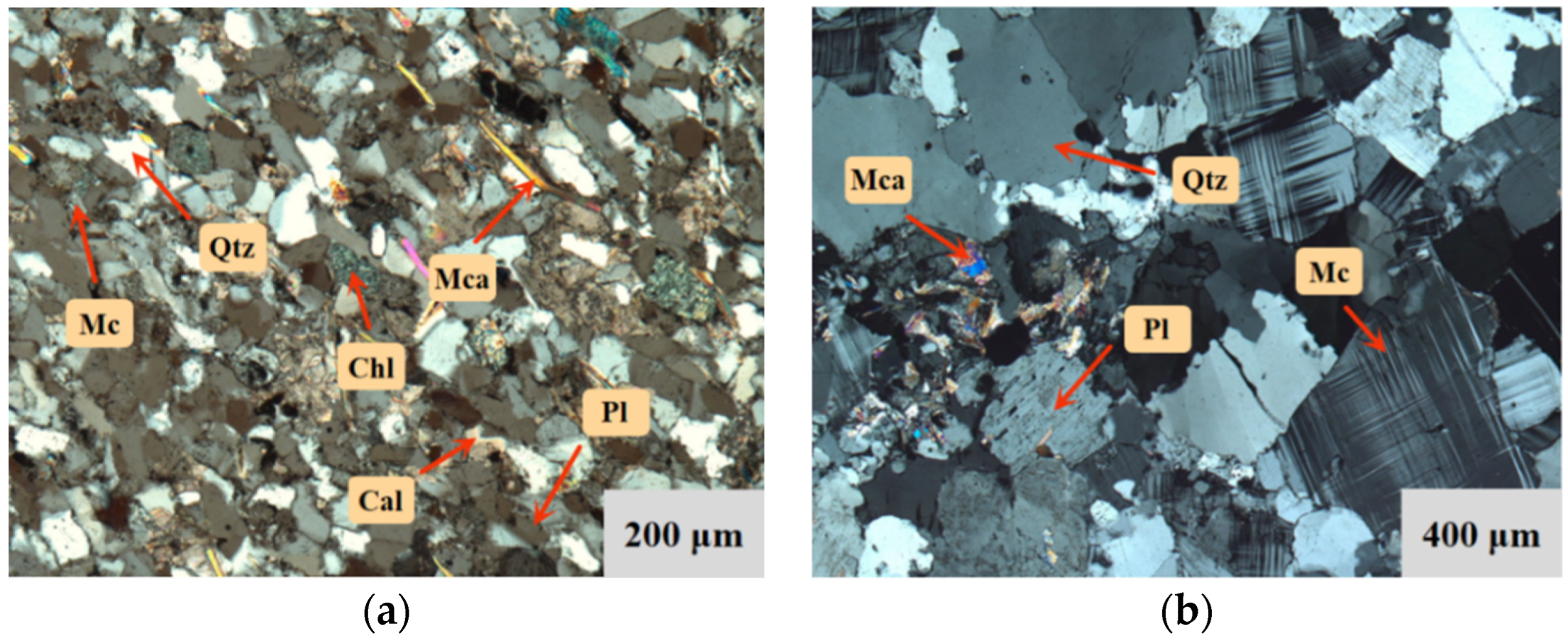
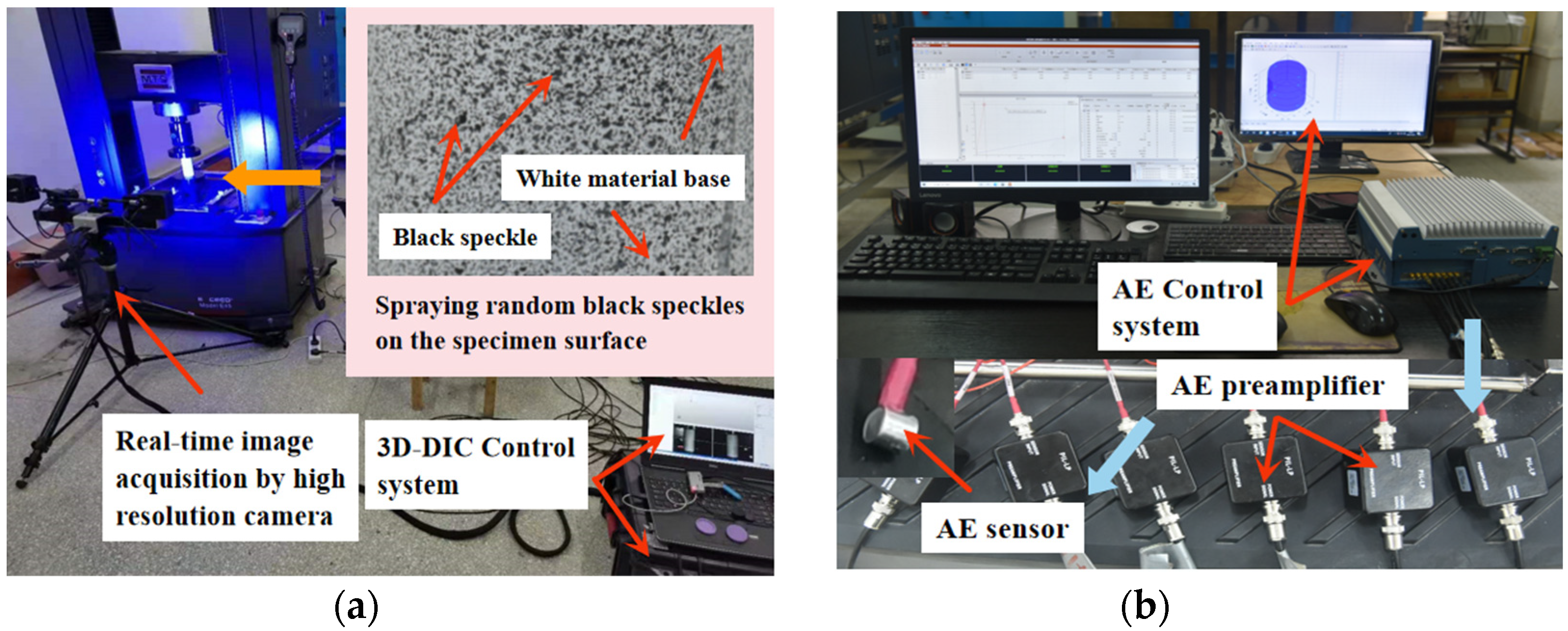
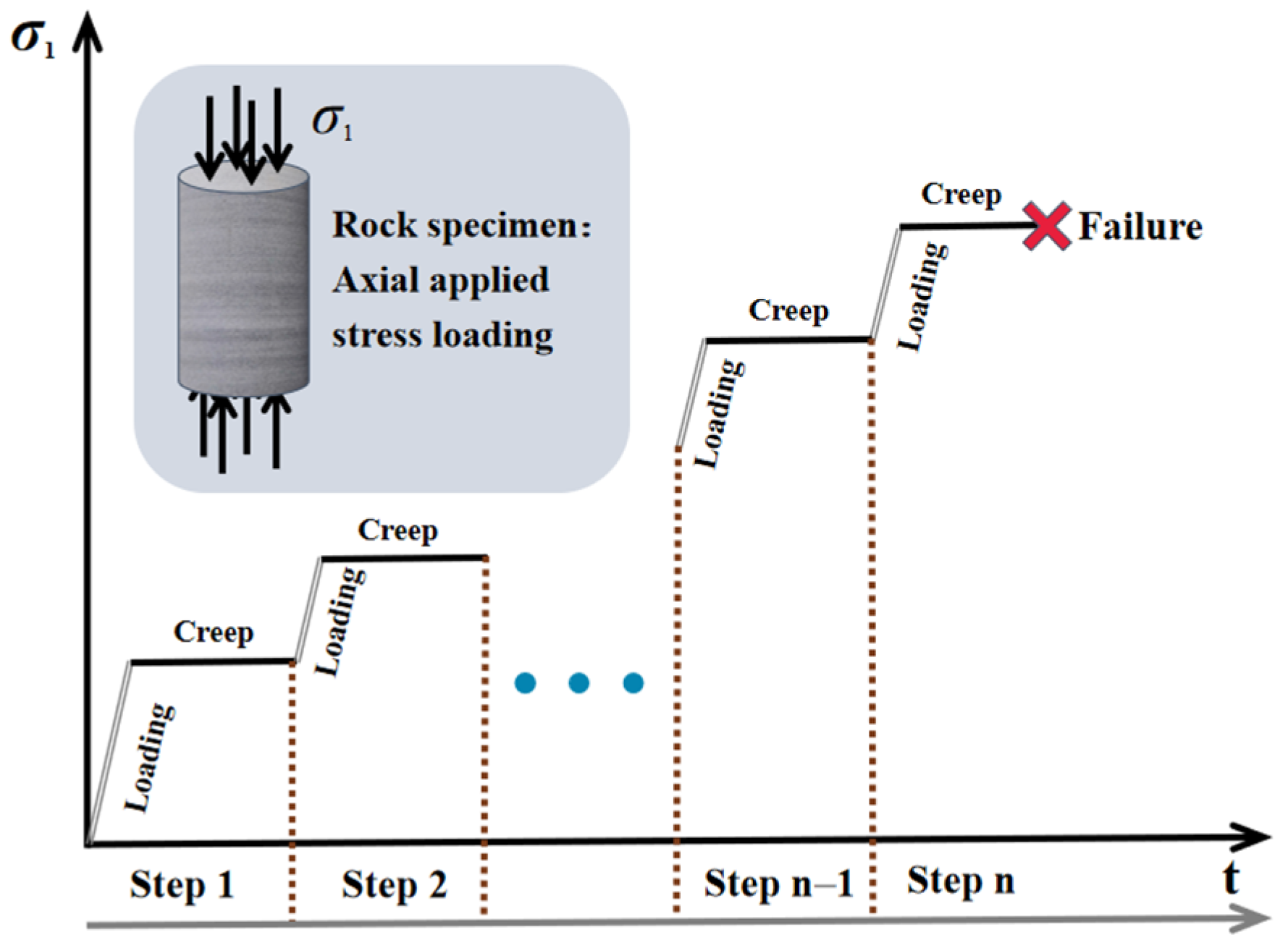
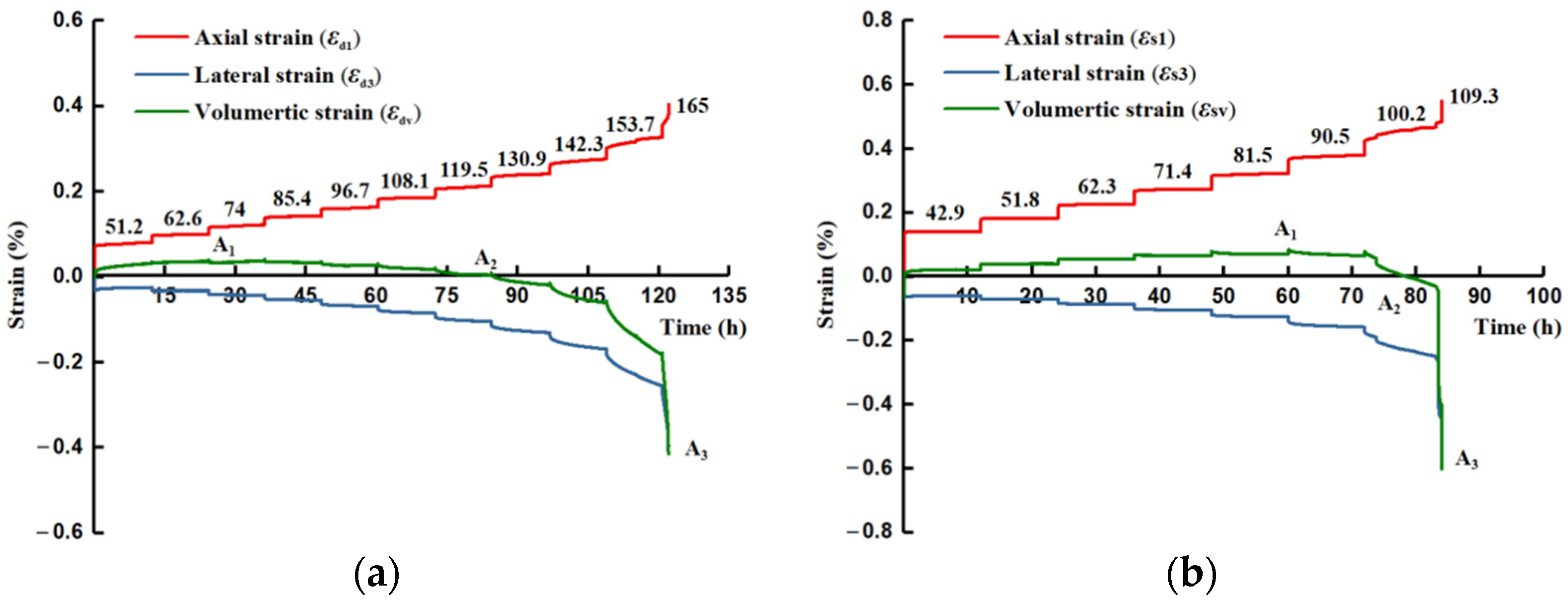
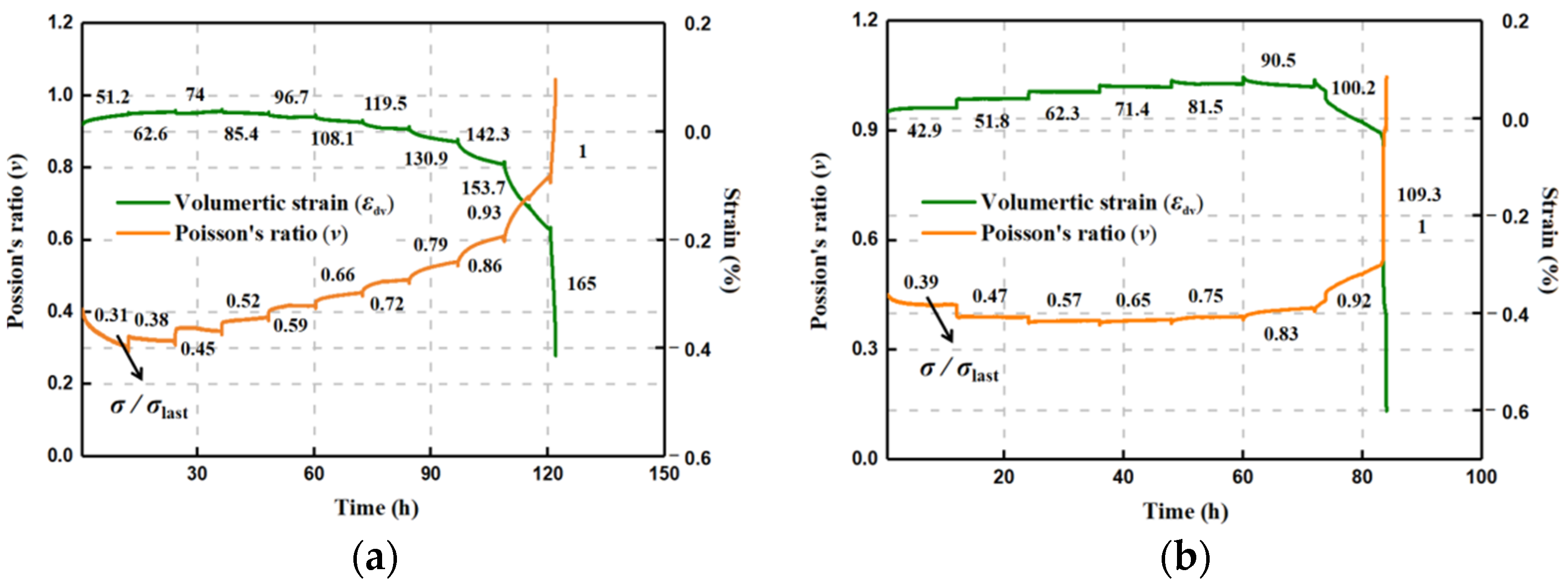
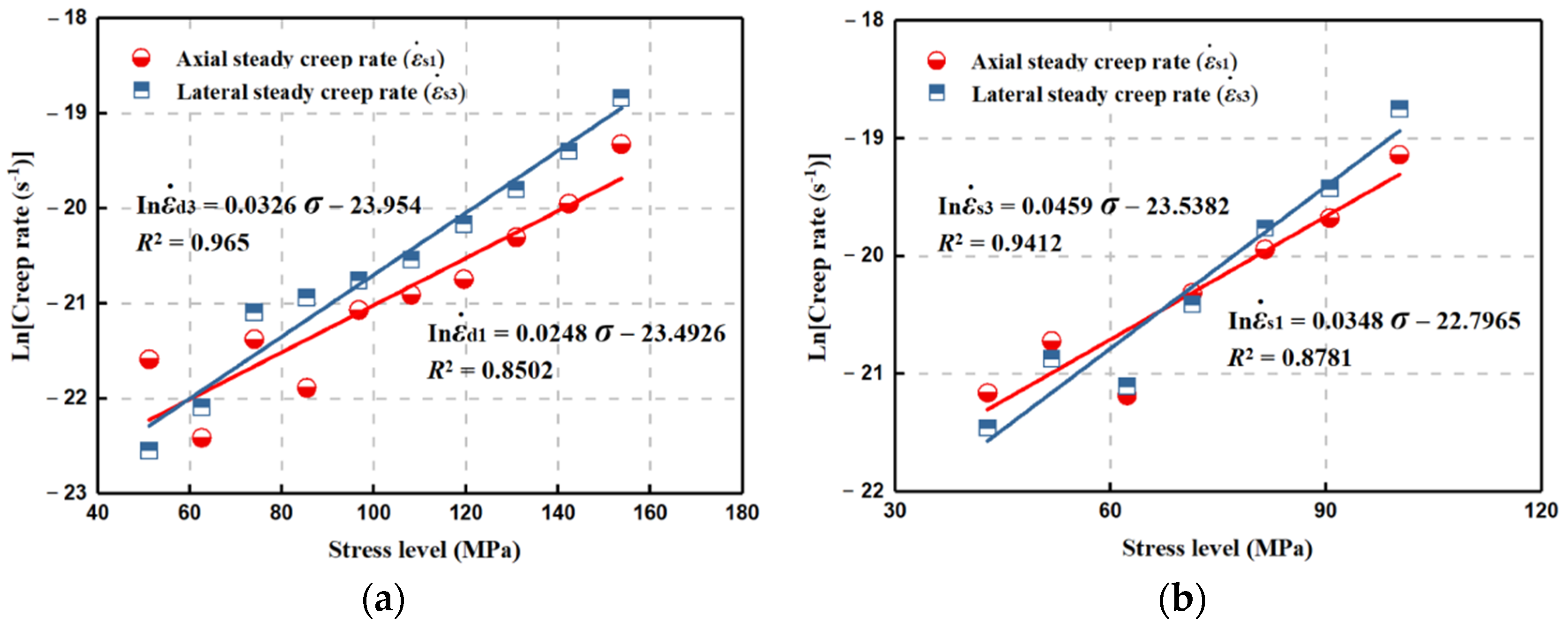
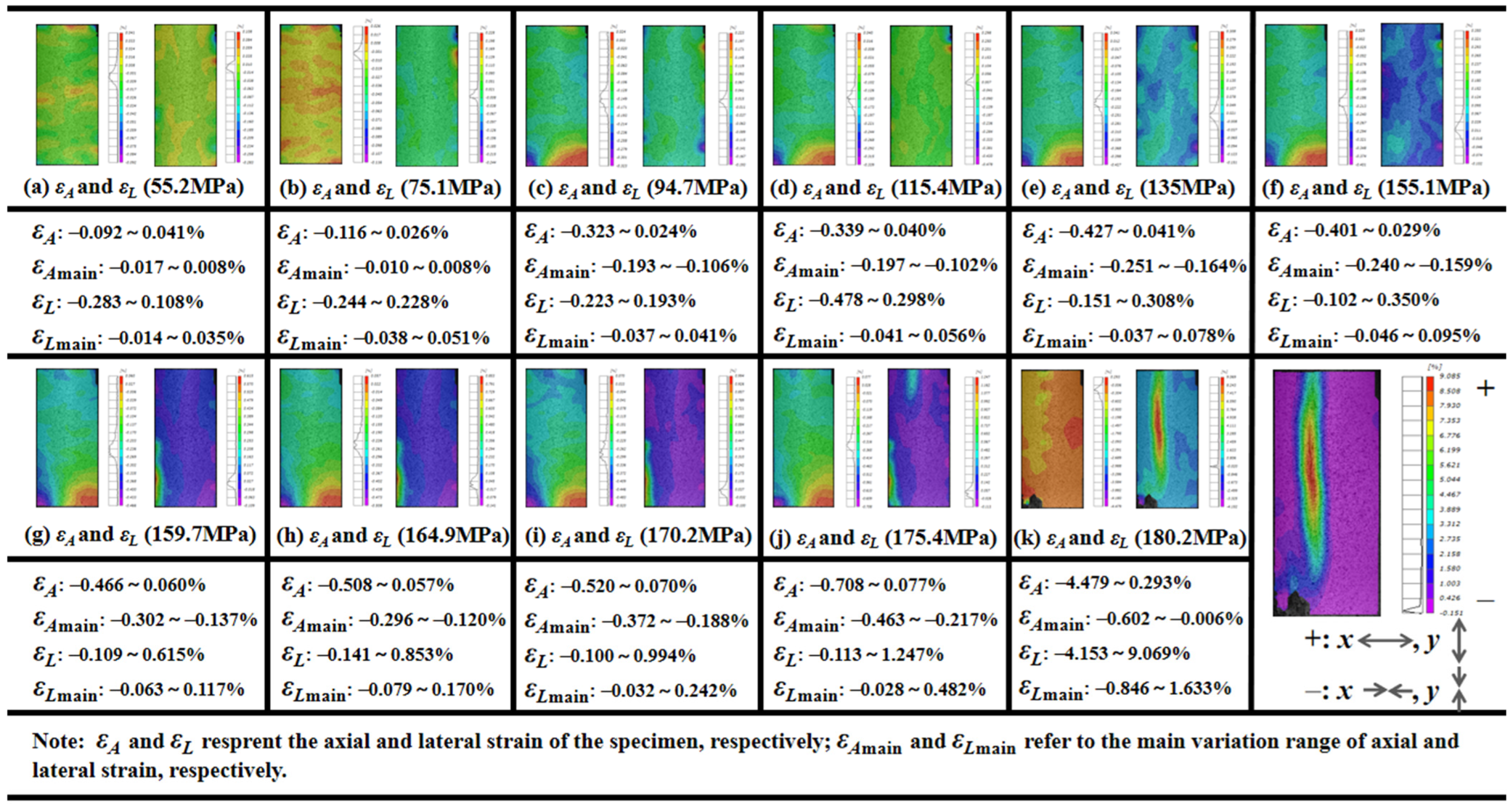
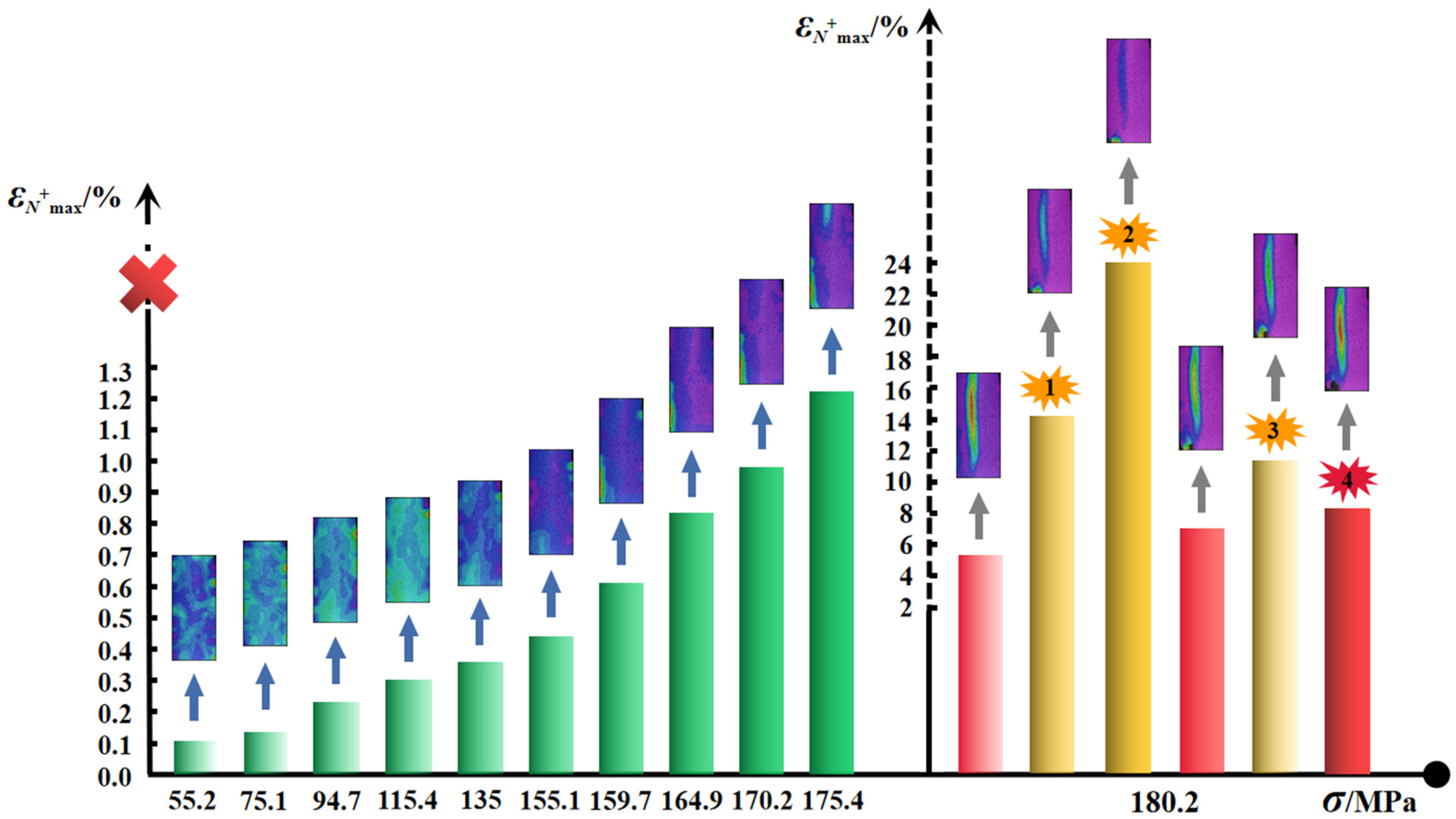
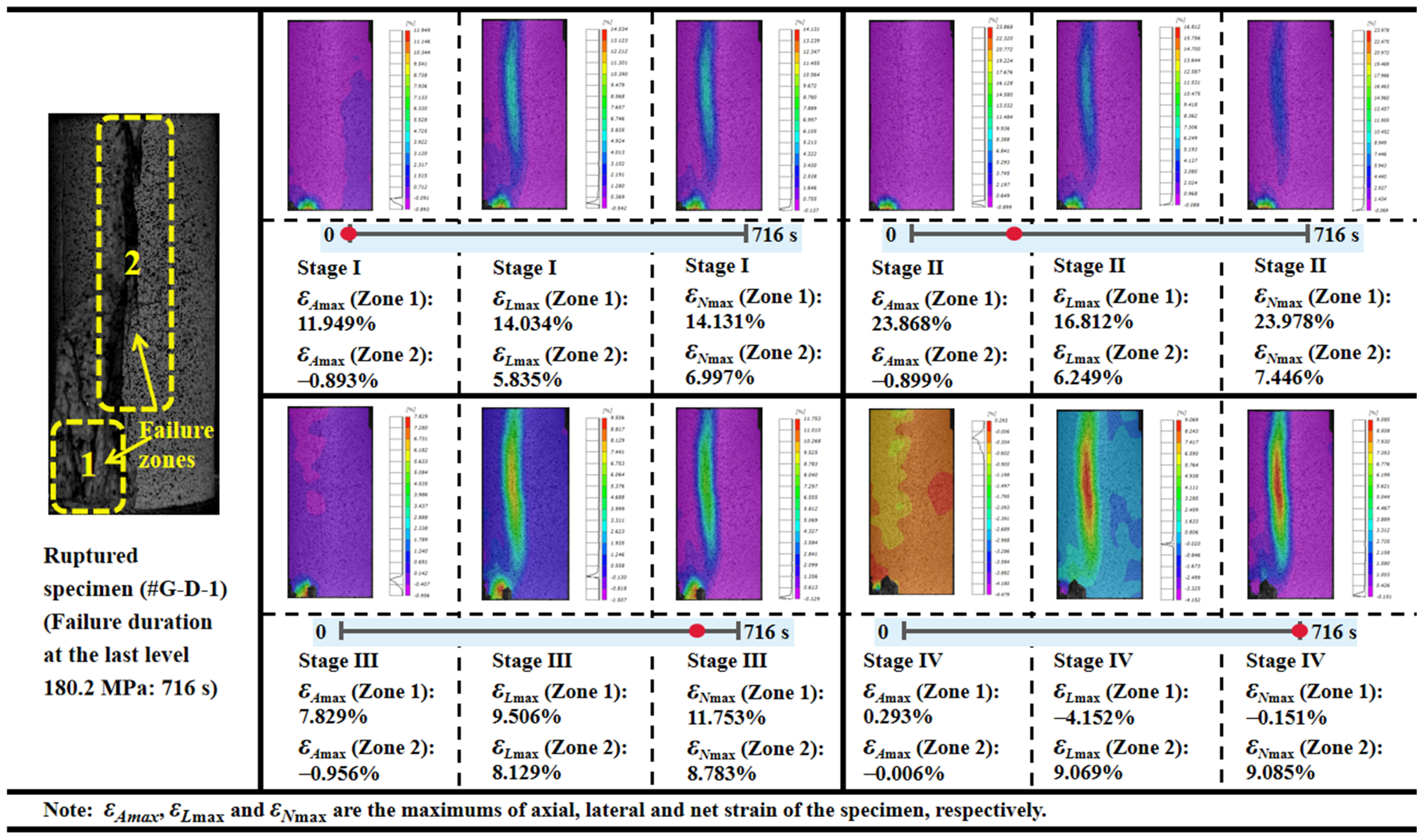

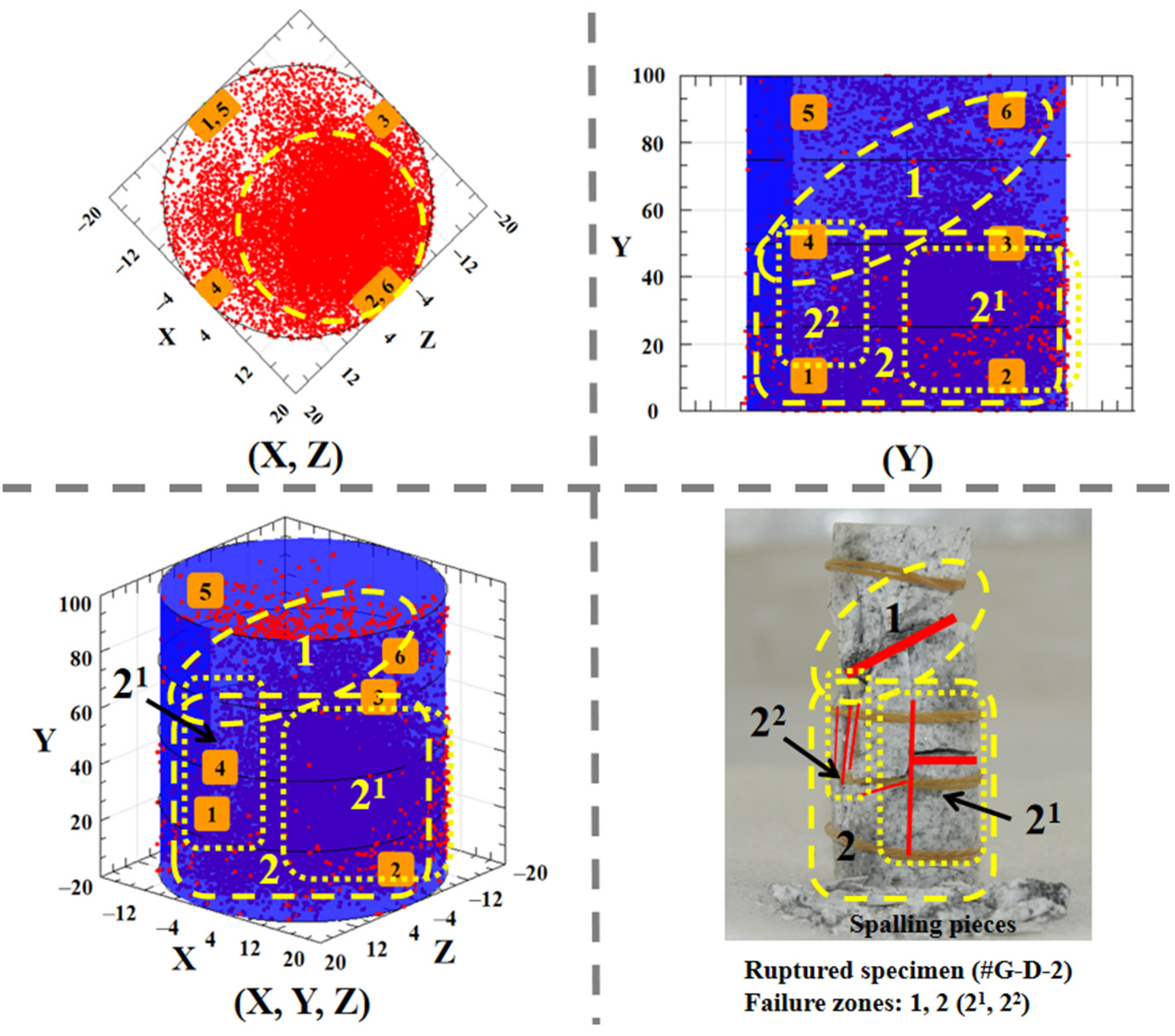
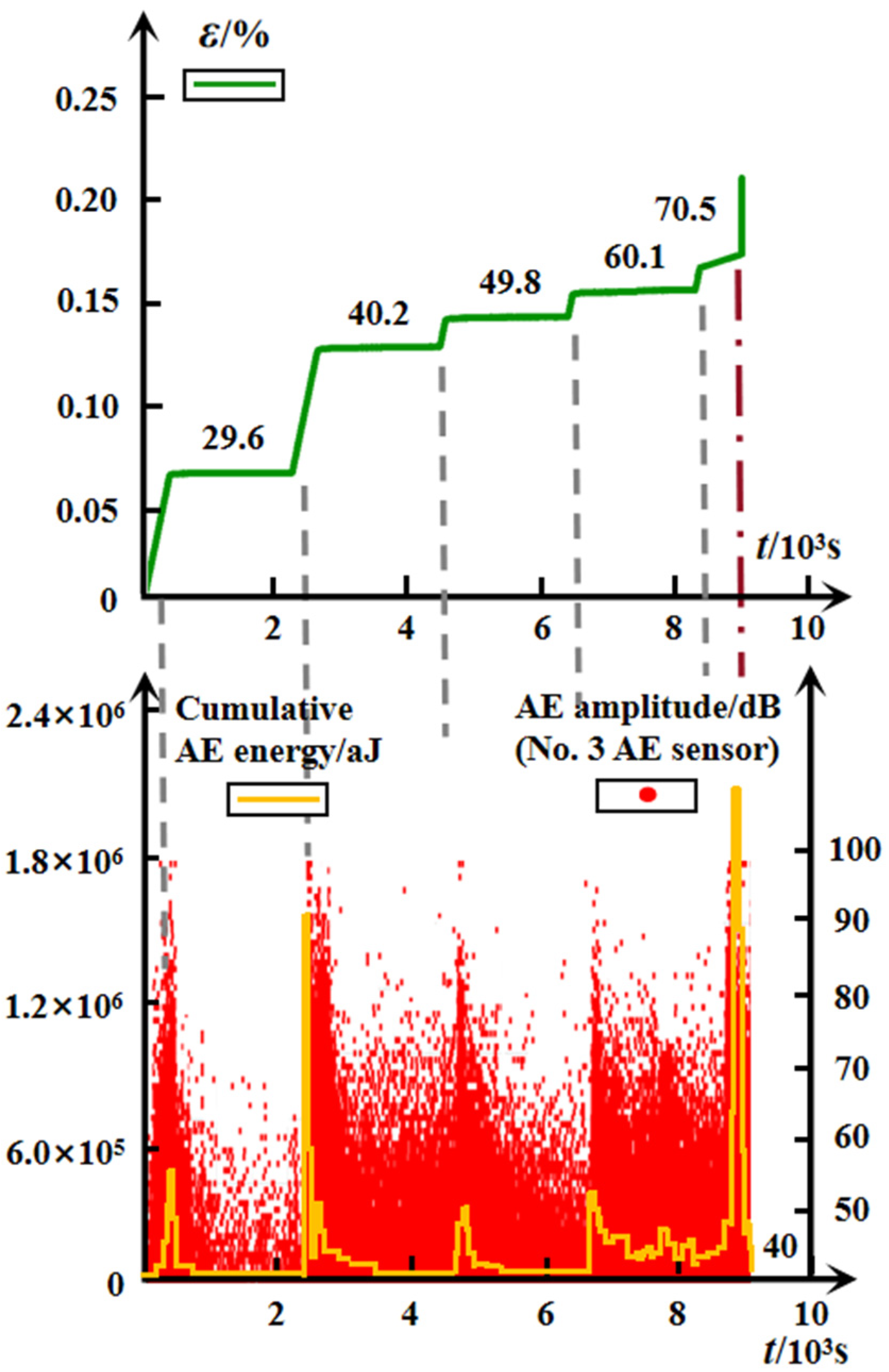

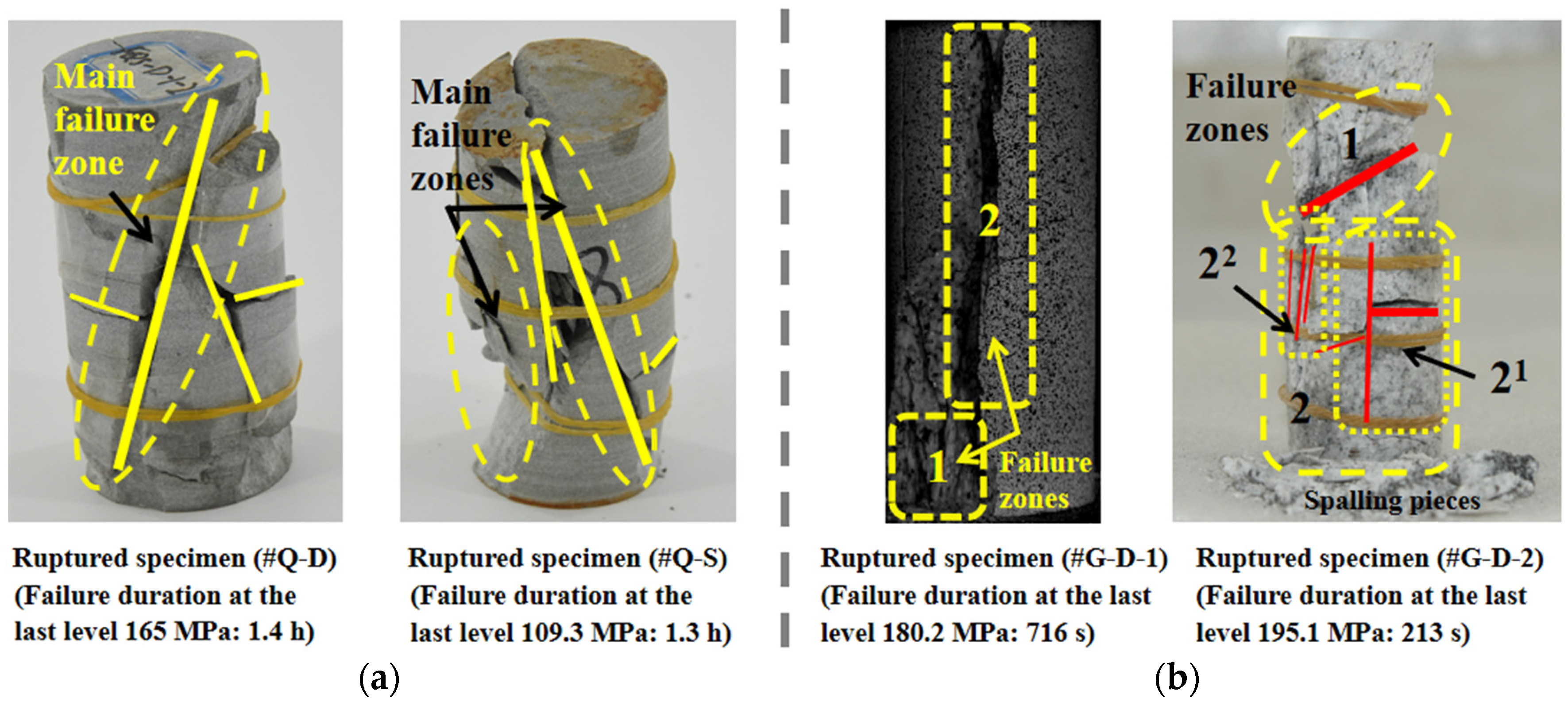
| #Q-S (Axial) | #Q-S (Lateral) | #Q-D (Axial) | #Q-D (Lateral) | |
|---|---|---|---|---|
| C3/rc1/2 | 0.034 | 0.0459 | 0.0248 | 0.0326 |
| lna(H2O) + C4 | −22.7965 | −23.5382 | −23.4926 | −23.594 |
| R2 | 0.8781 | 0.9412 | 0.8502 | 0.962 |
Publisher’s Note: MDPI stays neutral with regard to jurisdictional claims in published maps and institutional affiliations. |
© 2022 by the authors. Licensee MDPI, Basel, Switzerland. This article is an open access article distributed under the terms and conditions of the Creative Commons Attribution (CC BY) license (https://creativecommons.org/licenses/by/4.0/).
Share and Cite
Chen, H.; Shao, Z.; Fujii, Y. An Experimental Investigation on the Creep Behavior of Deep Brittle Rock Materials. Materials 2022, 15, 1877. https://doi.org/10.3390/ma15051877
Chen H, Shao Z, Fujii Y. An Experimental Investigation on the Creep Behavior of Deep Brittle Rock Materials. Materials. 2022; 15(5):1877. https://doi.org/10.3390/ma15051877
Chicago/Turabian StyleChen, Haozhe, Zhushan Shao, and Yoshiaki Fujii. 2022. "An Experimental Investigation on the Creep Behavior of Deep Brittle Rock Materials" Materials 15, no. 5: 1877. https://doi.org/10.3390/ma15051877
APA StyleChen, H., Shao, Z., & Fujii, Y. (2022). An Experimental Investigation on the Creep Behavior of Deep Brittle Rock Materials. Materials, 15(5), 1877. https://doi.org/10.3390/ma15051877






